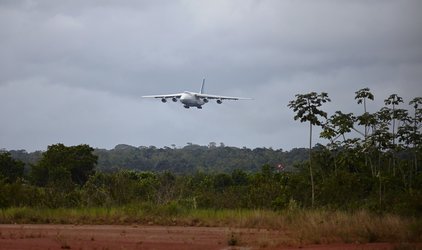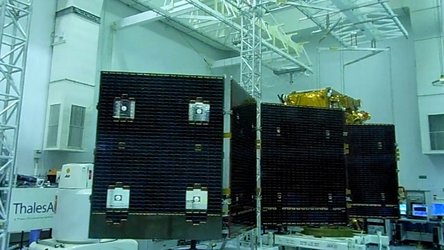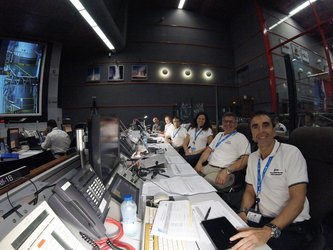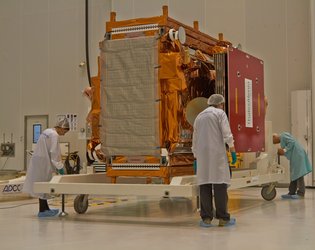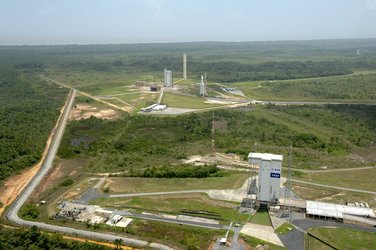Sentinel-1 fuelled and ready
ESA’s first satellite dedicated to Europe’s environmental monitoring Copernicus programme has been fuelled and pressurised, ready for its launch on 3 April.
Since its arrival in Kourou, French Guiana a month ago, Sentinel-1A has been put through a series of stringent tests.
As well as ensuring that this new satellite hadn’t incurred any damage during transit from France, the tests included the lengthy process making sure its batteries charge from the solar wings and then release energy to the satellite as needed, as they would do in space.
The latest preparations have focused on fuelling. As this is an extremely hazardous task, the fuelling team has to wear special ‘scape suits’.

Marking a milestone on the road to launch, the team finished loading the fuel last Friday and pressurised the tanks yesterday.
Svein Lokas, ESA’s Sentinel-1A Launch Campaign Manager, said, “The various teams have been working flat out to thoroughly test the satellite and all its components.
“We are very happy and relieved that we have reached this important milestone.”
ESA’s Sentinel-1 Project Manager, Ramón Torres, added, “After being involved in the Sentinel-1 mission for more than seven years, these last few days before launch are very rewarding.”

“It is thanks to the outstanding technical excellence and collaborative efforts from industry and ESA that have brought us to this point, and we all look forward to a successful launch on 3 April.
“Once safely in orbit around Earth, this new satellite will provide essential radar imagery for Europe’s Copernicus programme – a programme that will make a step change in the way we care for our planet.”
Sentinel-1 is defined by its advanced radar. Able to scan Earth’s surface no matter what the weather and regardless of whether it is day or night, it will be vital for numerous practical applications.

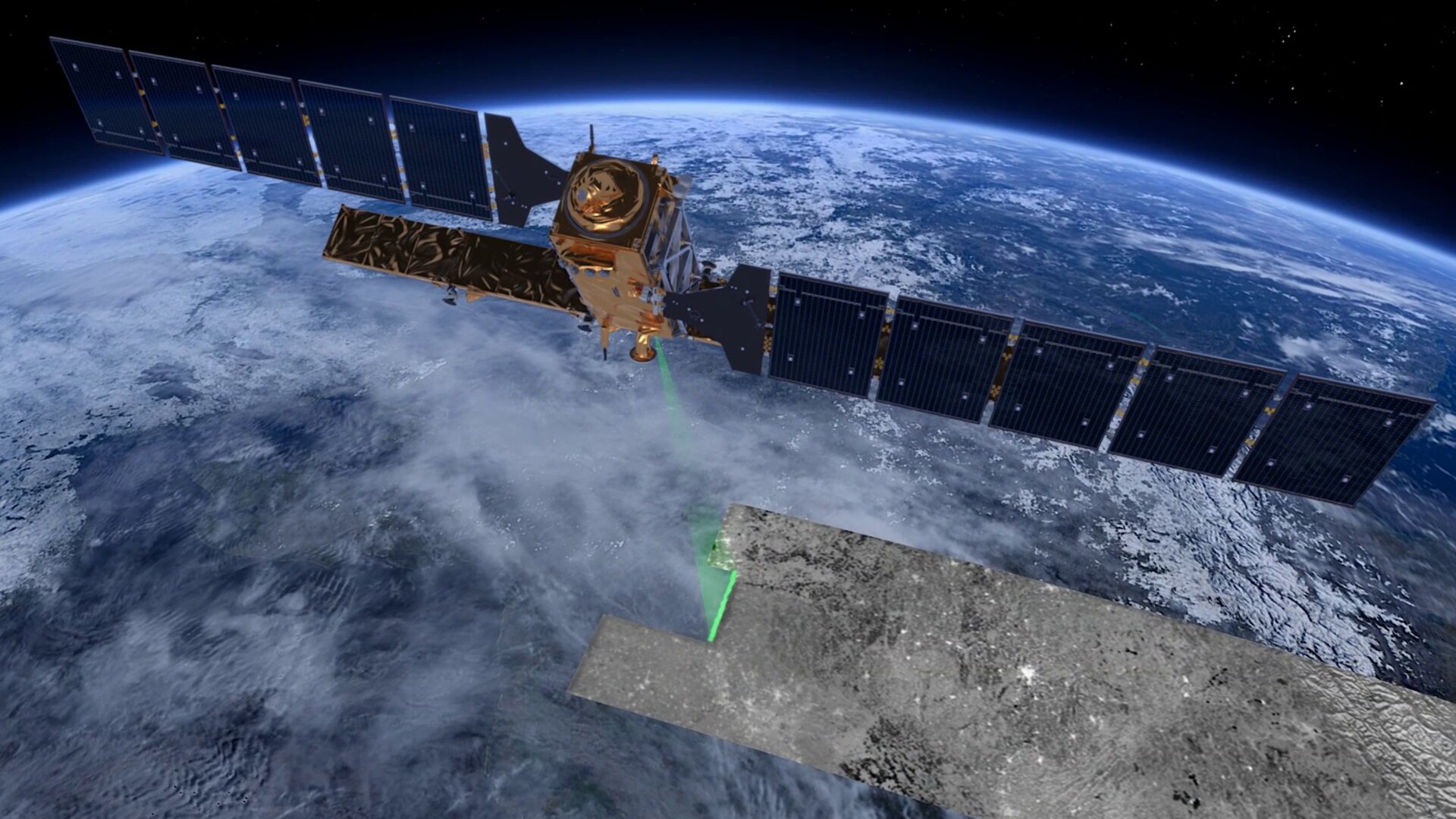
Access the video
In crisis situations, it will be used for rapid response to disasters such as floods and earthquakes. Its radar will routinely monitor shipping zones, map sea ice and provide information on winds and waves for marine traffic, track changes in the way land is being used, and monitor subsidence.
While the delicate task of fuelling was in process, the three stages of the Soyuz rocket were assembled. The launcher is now going through electrical checks.
With the satellite fully loaded and pressurised, it is now being mated to the adapter before it joins Soyuz’s Fregat upper stage. It will then be encapsulated in the rocket fairing, sealed from view.














 Germany
Germany
 Austria
Austria
 Belgium
Belgium
 Denmark
Denmark
 Spain
Spain
 Estonia
Estonia
 Finland
Finland
 France
France
 Greece
Greece
 Hungary
Hungary
 Ireland
Ireland
 Italy
Italy
 Luxembourg
Luxembourg
 Norway
Norway
 The Netherlands
The Netherlands
 Poland
Poland
 Portugal
Portugal
 Czechia
Czechia
 Romania
Romania
 United Kingdom
United Kingdom
 Slovenia
Slovenia
 Sweden
Sweden
 Switzerland
Switzerland




























